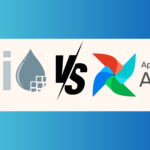
In today’s digital landscape, the ease of manipulating systems and misrepresenting identities poses significant challenges. With remote access to systems from the comfort of one’s home, individuals can reconfigure, redesign, or impersonate others, raising concerns about identity authenticity. This issue is further amplified by the increasing prevalence of remote work, which demands robust identity verification measures.
The Importance of Identity Verification
Traditional methods such as wearing ID cards have been reliable for identifying individuals in conventional work settings. However, as remote work gains prominence, the need for stringent identity verification becomes paramount. Imagine the scenario of hiring staff based in another country, working remotely. Additionally, customers accessing websites from diverse locations underline the critical necessity of accurately identifying and verifying all stakeholders.
Understanding Identity Verification API
Identity Verification API emerges as a pivotal tool in combating identity fraud. It serves as a mechanism to authenticate the identity of customers or online users, thereby mitigating risks associated with fraudulent activities. This API facilitates the authentication of various documents, including employment records, educational credentials, and professional licenses, safeguarding against security breaches and data theft.
Benefits of Identity Verification
The advantages of identity verification are manifold. Apart from bolstering security measures, it enables advanced fraud detection and prevention. By streamlining documentation authentication processes, identity verification ensures that only authorized users gain access to sensitive information and conduct secure online transactions, thus shielding businesses from potential cyber-attacks and fraudulent schemes.
The Process of Identity Verification
Identity verification encompasses a comprehensive process of collecting personal details and documents from prospective customers during the onboarding phase. These documents, such as government-issued IDs or passports, undergo meticulous scrutiny against established government databases to ascertain their authenticity. Leveraging advanced algorithms and data analysis techniques, identity verification APIs validate the accuracy of submitted documents, ensuring a robust and dependable verification process.
Key Features of an Ideal Identity Verification API
An ideal Identity Verification API boasts several essential features. It incorporates high-level security measures to mitigate fraud, data breaches, and identity theft. Multi-factor authentication, including biometric verification and anti-spoofing technology, enhances security layers and prevents unauthorized access. Moreover, it offers a high degree of accuracy, handling diverse data information with precision and efficiency. Customizable options facilitate seamless integration into existing systems, providing developer support and a wide array of document verification capabilities.
Examples of Companies Using Identity Verification APIs
Numerous online businesses, including prominent platforms like Airbnb and ride-sharing companies, leverage identity verification APIs to fortify security measures and foster trust among users. These APIs play a pivotal role in authenticating user identities and maintaining the integrity of online transactions, thereby enhancing user confidence and business credibility.
Conclusion
In conclusion, the adoption of a secure Identity Verification API is indispensable for businesses seeking to accurately verify the identities of their customers and partners. By implementing robust identity verification solutions, companies can effectively mitigate fraud risks, build trust, enhance customer experience, and ensure compliance with regulatory standards. Embracing advanced identity verification technologies empowers businesses to safeguard against identity theft, reduce operational costs, and establish enduring relationships with stakeholders, thereby fostering sustainable growth and resilience in an increasingly digitalized world.











